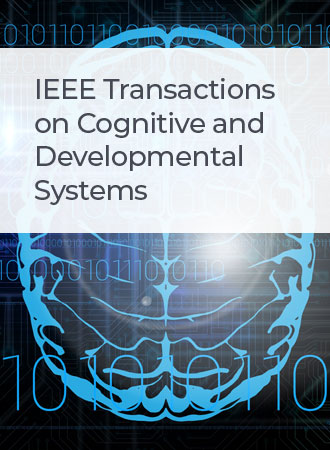Decoding Joint-Level Hand Movements With Intracortical Neural Signals in a Human Brain–Computer Interface
IF 4.9
3区 计算机科学
Q1 COMPUTER SCIENCE, ARTIFICIAL INTELLIGENCE
IEEE Transactions on Cognitive and Developmental Systems
Pub Date : 2024-06-04
DOI:10.1109/TCDS.2024.3409555
引用次数: 0
Abstract
Fine movements of hands play an important role in everyday life. While existing studies have successfully decoded hand gestures or finger movements from brain signals, direct decoding of single-joint kinematics remains challenging. This study aims to investigate the decoding of fine hand movements at the single-joint level. Neural activities were recorded from the motor cortex (MC) of a human participant while imagining eleven different hand movements. We comprehensively evaluated the decoding efficiency of various brain signal features, neural decoding algorithms, and single-joint kinematic variables for decoding. Results showed that using the spiking band power (SBP) signals, we could faithfully decode the single-joint angles with an average correlation coefficient of 0.77, outperforming other brain signal features. Nonlinear approaches that incorporate temporal context information, particularly recurrent neural networks, significantly outperformed traditional methods. Decoding joint angles yielded superior results compared to joint angular velocities. Our approach facilitates the construction of high-performance brain–computer interfaces for dexterous hand control.在人脑-计算机接口中利用皮层内神经信号解码关节级手部运动
手部的精细动作在日常生活中起着重要作用。虽然现有的研究已经成功地从大脑信号中解码了手势或手指运动,但直接解码单关节的运动学仍然具有挑战性。本研究旨在探讨手部精细动作在单关节水平上的解码。当参与者想象11种不同的手部动作时,从运动皮层(MC)记录下神经活动。我们综合评估了各种脑信号特征、神经解码算法和单关节运动变量的解码效率。结果表明,利用峰值带功率(SBP)信号可以准确地解码单关节角,平均相关系数为0.77,优于其他脑信号特征。结合时间上下文信息的非线性方法,特别是递归神经网络,显著优于传统方法。与关节角速度相比,解码关节角度产生了更好的结果。我们的方法有助于构建用于灵巧手控制的高性能脑机接口。
本文章由计算机程序翻译,如有差异,请以英文原文为准。
求助全文
约1分钟内获得全文
求助全文
来源期刊

IEEE Transactions on Cognitive and Developmental Systems
Computer Science-Software
CiteScore
7.20
自引率
10.00%
发文量
170
期刊介绍:
The IEEE Transactions on Cognitive and Developmental Systems (TCDS) focuses on advances in the study of development and cognition in natural (humans, animals) and artificial (robots, agents) systems. It welcomes contributions from multiple related disciplines including cognitive systems, cognitive robotics, developmental and epigenetic robotics, autonomous and evolutionary robotics, social structures, multi-agent and artificial life systems, computational neuroscience, and developmental psychology. Articles on theoretical, computational, application-oriented, and experimental studies as well as reviews in these areas are considered.
 求助内容:
求助内容: 应助结果提醒方式:
应助结果提醒方式:


